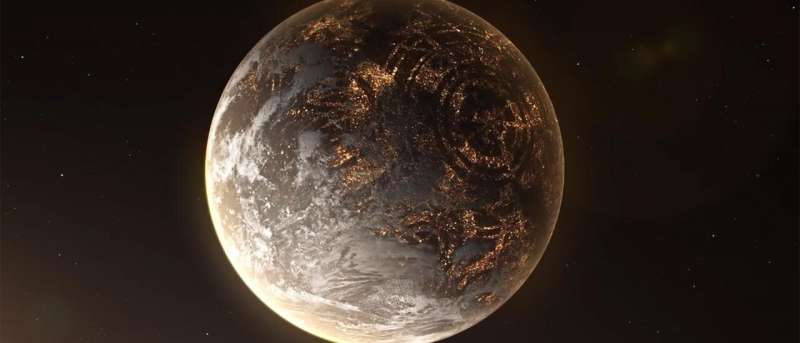Some of the proposed searches look very far in space, across our galaxy and even beyond, while others aim at scanning our own solar system in search for probes that might have been sent here in a distant past. In addition, a study is included of a new way of classifying the technosignatures as a function of their 'cosmic footprint," a measure of how conspicuous they are at large distances.
"We have no idea whether intelligence is something very common in the Universe or, on the contrary, whether it is extremely rare," explains Hector Socas-Navarro, an IAC researcher, the Director of the Museum of Science and the Cosmos, of Museums of Tenerife, and the first author of the article. "For that reason we cannot know whether these searches have any chance of success. There is no choice but to search and see what we find, because the implications would be tremendous."
"The idea of searching for technosignatures draws upon the technology we have on Earth today and possible extensions of our technology into the future," notes Jacob Haqq-Misra, a coauthor of the article and chairman of the TechnoClimes 2020 organizing committee. "This does not necessarily mean that any extraterrestrial technology must be like our own, but imagining plausible extensions of our own future is one place to begin thinking of astronomical searches we could actually do to look for possible technosignatures."
The search for technosignatures
In 1993, NASA abruptly terminated its initial SETI program for the search for intelligent extraterrestrial life, when it had hardly started. It comprised two complementary ambitious projects, one using the giant radiotelescope at Arecibo, Puerto Rico, and the other with the antennas of the Deep Space Network in California. Now, nearly 30 years later, things have changed and the Agency wants to re-start its search effort.
In the past decade great advances in astronomical instrumentation have been made, leading to a revolution in the science of discovery and study of exoplanets. The new telescopes, and projects on future space missions will for the first time allow the search for so-called biomarkers, evidence for life on other planets. Many experts consider it plausible that in the coming years we will discover extraterrestrial life, even though it is most likely to be life in very simple form.
Given present and future technological advance there will be new opportunities to search for technosignatures. That is why NASA has decided to get involved again in the search for extraterrestrial intelligence, taking advantage of the possibilities of the current and proposed future space observatories.
These subjects, among others, were on the agenda of the meeting TechnoClimes 2020 under the auspices of NASA at the Blue Marble Space Institute of Science (Seattle, U.S.). With scientists from all over the world, its aim was to propose new developments making way for future advances.
Finally, due to the COVID-19 pandemic, the meeting was held virtually via videoconference, in which 53 researchers from various disciplines coming from 13 countries discussed a range of aspects of the search for other intelligent species.



